Fishing has a lot to do with patience. But there’s only so long you can wait for fish to bite, especially if you went through the trouble of driving all the way to a lake. A portable fish finder takes the guessing game out of fishing. You can spend more time fishing and less just sitting around.
These devices use sonar technology to detect the presence of fish. Using it, you can guide your boat to where there’s more fish to catch. Since they’re portable, you don’t need to mount them anywhere. Some models will even fit in your pocket—that’s how small they get!
In this article, we’ll go over the 9 best portable fish finder gadgets. We’ll review them based on key features, ease of use, convenience, accuracy, and price. Then, you’ll find a buying guide to help you pick the perfect fish finder for you. Lastly, you’ll see a bunch of frequently asked questions that we’ve answered for you.
What Is a Portable Fish Finder?
A portable fish finder is a small device that uses sonar technology to detect things beneath the surface. It is great at detecting all kinds of fish, both small and large ones.
The best thing about these gadgets is that they don’t need to be mounted on a boat to work. Traditional fish scanners need to be hardwired to a boat. With these, you can fish from the shore without having to worry about logistics.
As you can imagine, they’re pretty lightweight. The smallest ones fit in your pocket and pair up with your phone. But even the biggest models are compact enough to fit inside a small backpack.
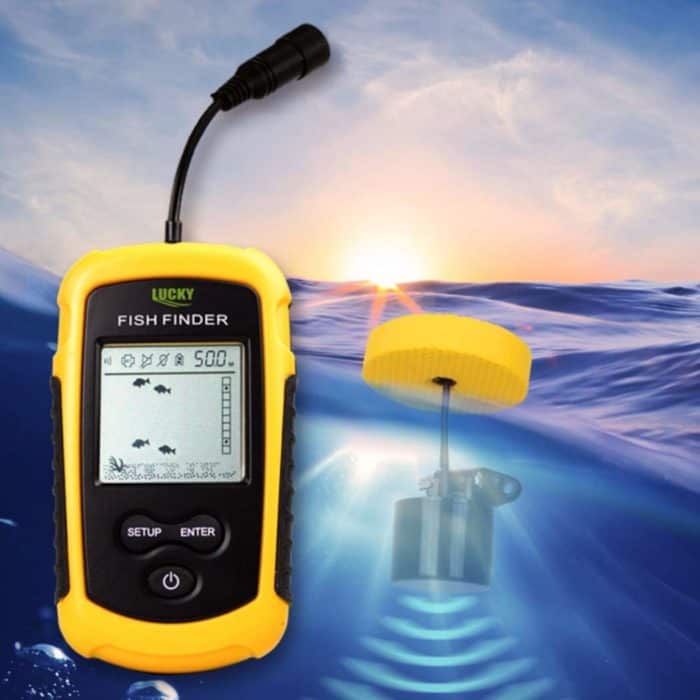
How Does a Portable Fish Finder Work?
Portable fish finders use sonar technology, like many other gadgets. The transducer emits sound waves. If there’s an object in their way, the waves will hit it and bounce back. When those waves reach the transducer, the software calculates how far away the object is. It does this by analyzing how many seconds it took for the waves to bounce back from the obstacle.
Luckily, you don’t have to worry about doing any math. The fish scanner does that for you. On the screen, you’ll see how deep the fish are based on the readings the transducer did. If there are quite a lot of obstacles in the way of the device, you can pretty much deduce it’s a good spot for fishing.
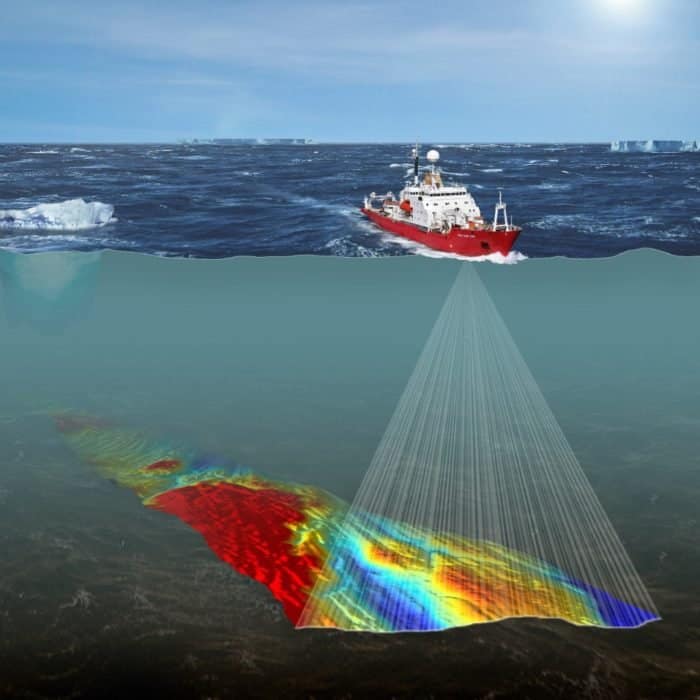
Do Portable Fish Finders Work?
Yes, they do! The higher-end models can detect small fish with a lot of precision. They can also tell a rock or bank of sand from a school of fish, so you’re never induced in error. The cheaper models will still accurately tell you where fish are. Yet, they’re not as sensitive as other items and will only be able to detect medium-sized fish (larger than 10 centimeters).
Who Should Get a Fish Finder?
Fishing fans can benefit a lot from getting one of these devices. For starters, fish finders lead you to good fishing spots. Pick an area of the lake or shore that’s home to a larger amount of fish. No more waiting for hours for something to bite.
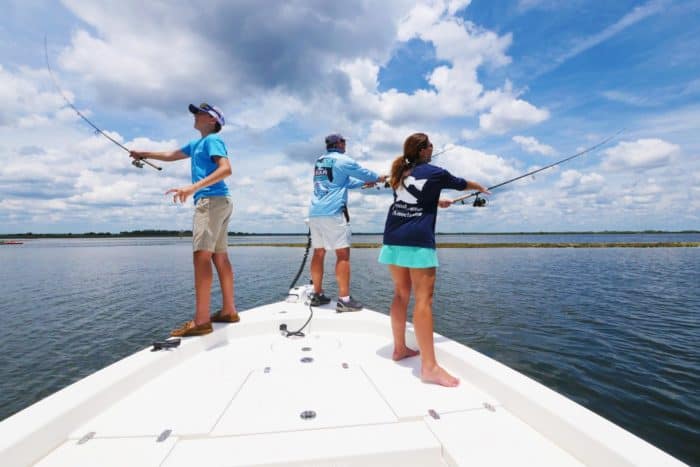
How to Use a Portable Fish Finder
Technology can be a bit daunting, but in this particular case, it doesn’t have to be. All models are different and give you the readings in different ways. In spite of that, to use most fish scanners what you have to do is:
- Turn on the scanner and, if it applies, pair it with your smartphone.
- Adjust the settings to your preferences.
- Cast the fishing line into the water with the transducer attached.
- Keep an eye on the screen and wait for fish to show on the screen.
Step four is where the models diverge. Some will show red-and-yellow botches to tell you there are fish nearby. Others will only show the icon of a fish at the depth they’re at. That’s why it’s useful to read the instructions manual when you get your gadget. All in all, the screen shouldn’t be hard to read.
Where to Use a Fish Finder?
You can use a portable fish finder pretty much anywhere you can fish. Lakes, off a quiet beach, slow streams, you name it. Just beware of waves and suspended particles. These will throw off the readings and make them inaccurate.
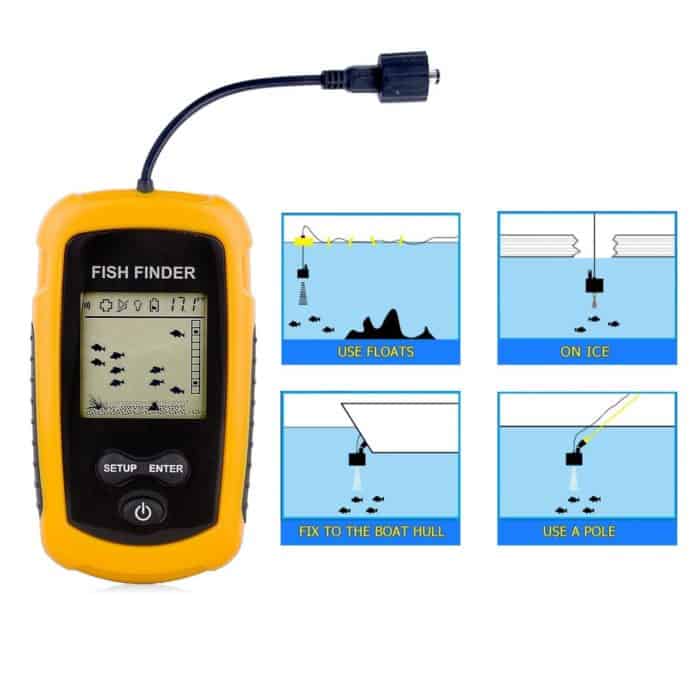
What Can I Use My Fish Finder For?
The best portable fish finders work in a variety of situations. The more extra features your device comes with, the more places you can take it.
Ice Fishing
You can go ice fishing with a portable fish scanner. After all, wouldn’t it be great if the hole you drill in the ice sheet is near a school of fish?
There are two ways you can go about using the scanner. The first is by cutting a separate hole for the fish finder and checking to see if it’s in a good area. If it is, go ahead and drill another hole next to it for your fishing line. The second way is by clearing snow piled on top of the ice sheet, making sure there are no cracks or bubbles in the ice, and placing the scanner here. If your sonar tells you that’s a good place to cut a hole, go ahead and do that. While the readings may not be as accurate with some models in this situation, it’s the most hassle-free way of scouring for a good fishing spot.
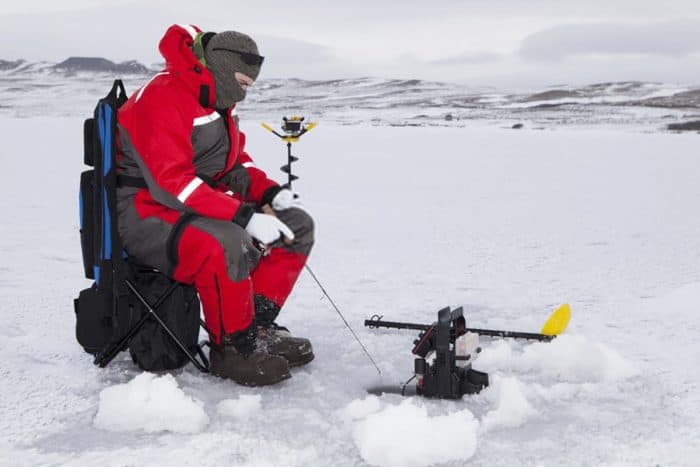
Kayak Fishing
This is one of the most popular uses for portable scanners. Yet, it can get a little tricky with installation—and not all devices will work on a kayak.
First, make sure your fish scanner uses either rechargeable or disposable batteries. If so, great! Some models need to be plugged into a 12-volt battery, like that of a boat or car. With those, you won’t be able to go kayak fishing.
Second, find a way to mount the scanner on the kayak. Larger, clunkier models may come with suction cups at the bottom that you can attach to the front of the kayak. You could also find a spot on the floor of the kayak to set up your fishfinder. Alternatively, if you’re using a scanner that sends the readings to your phone, you could attach your phone to the fishing pole. There are ways of making this less precarious. For instance, you could get a phone mount and fix it securely in place on the pole.
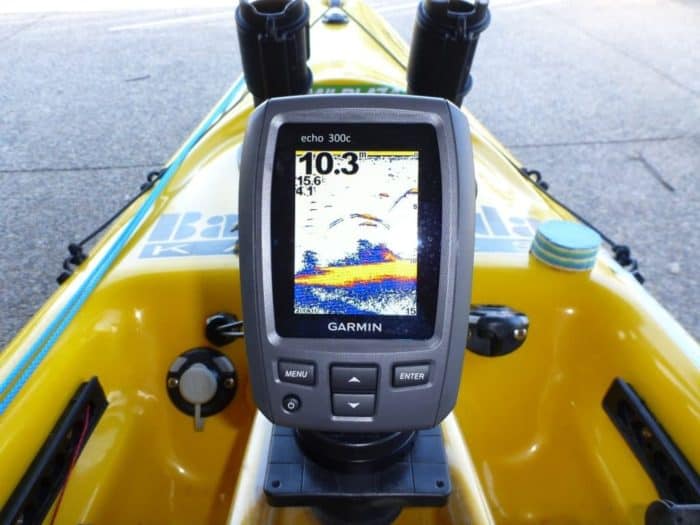
Sea Fishing
An obvious use for these portable scanners is sea fishing. When you go out on a boat, there’s plenty of room to set up the scanner: on the side of the boat, on one of the seats, on the floor—get creative. You’ll just have to watch out for waves. These interfere with the accuracy of the transducer readings, leaving you with a bad reading. But if the sea is calm, it’s a great place to use your new device.
Saltwater Fishing
You may be concerned about how accurate your sonar’s readings are in saltwater. Don’t be. Most portable fish finders are adapted for both freshwater and saltwater fishing.
Underwater Fishing
Portable fish finders are used to get a clear picture of what’s happening below the surface. They’re your second pair of eyes, only adapted to seeing underwater. As useful and handy as they are, they’re no good for underwater fishing. After all, you would be using your own eyes to find your next catch.
What’s the Difference Between a Portable Fish Finder and a Marine GPS?
Marine GPS systems (only) give you an idea of where you are geographically. They’ll show your position on a map. You can use them to save specific spots on a map and to create a custom route, if you want. They’re super handy when you go out on a large lake and want to be back to the port from where you left. Despite all their useful features, they won’t create water depth maps for you. Nor will they detect where schools of fish are.
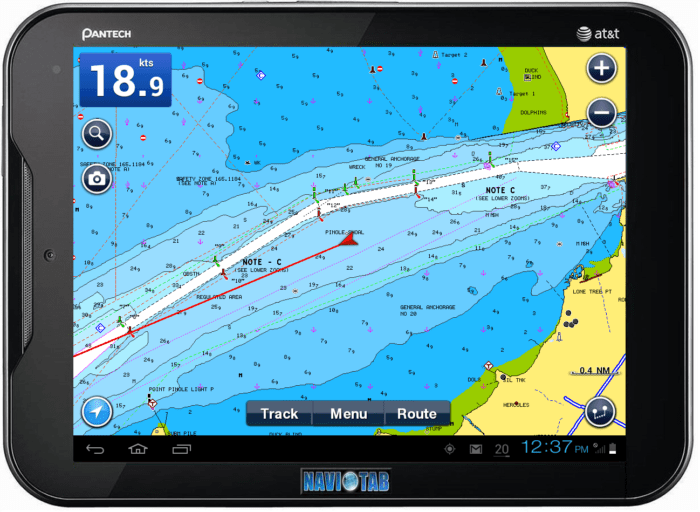
For that, you would need a portable fish finder. These devices can be simple or complex. The simpler models will (only) give you a picture of where to find fish. They won’t show your position on a map or anything of the sorts. But the more complex models usually have an integrated GPS system! That means that at the same time you could have on the screen the position of schools of fish and your position on a map. What’s best about these state-of-the-art devices is that you can save your favorite fishing hotspots for future visits. And they’re not that expensive.
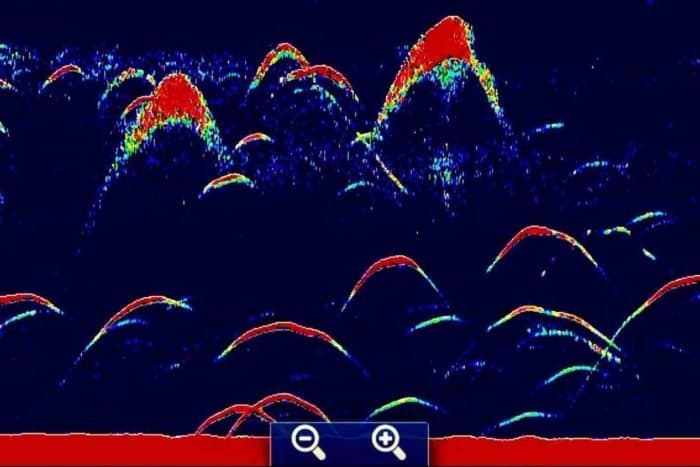
Different Types of Portable Fish Finders
There are essentially three kinds of fish finders. Which one you should get depends on what technology you think you’ll get along better with and on what you expect from your gadget.
Portable Units
Portable finders are the most common models. They’re a bit larger than your hand but still lightweight enough to take with you on the go. The transducer sends the readings to a screen—some models have fancy color LEDs while others have much more simplistic displays—and there are a few buttons you can press to play with the settings.
These units are hard to beat. They’re reliable, give accurate readings, and have a decent battery life in most cases. They’re also easy to use when it comes to reading the graphs on-screen.
If we had to point out a flaw, it would have to be that they’re not super compact. Carrying them around isn’t too much of a problem, as long as you still have room in your fishing supply bag.
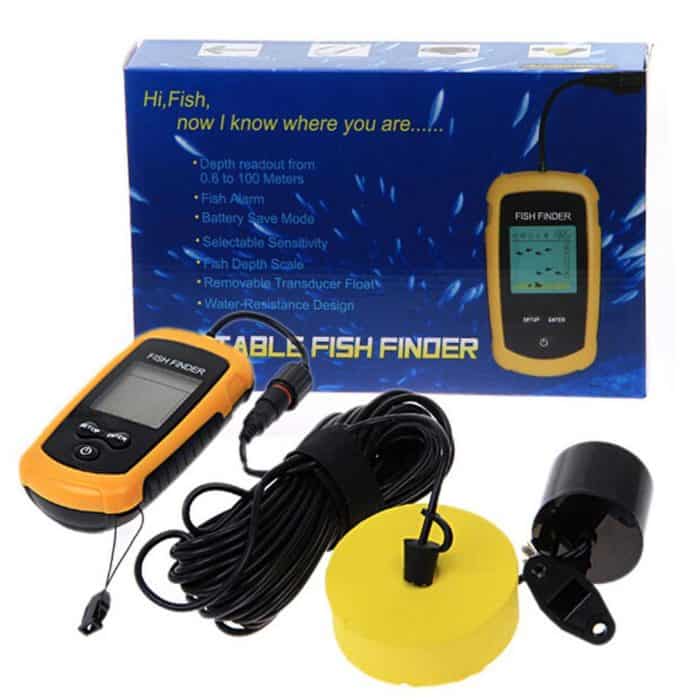
Castable Units
These are more futuristic devices that use Bluetooth and WiFi to connect to your phone. The transducer (the part that emits the sound waves) looks like a ball and fits in the palm of your hand. It will pair with your phone so that you can analyze the readings. Most models work with both Android and iOS devices.
Their main advantage is how portable they are. They fit in your pocket easily! If you’re strapped for space inside your fishing supplies bag, this might be an option to consider.
They have some downsides, especially because they’re such recent technology. The first is that the connection between the transducer and the phone can be weak at times. On top of that, older or clunkier phones tend not to support the app very well. Some people have had their apps crash when they were out fishing. Lastly, their batteries tend to last only up to 8 hours, and this gets worse the more you use it.
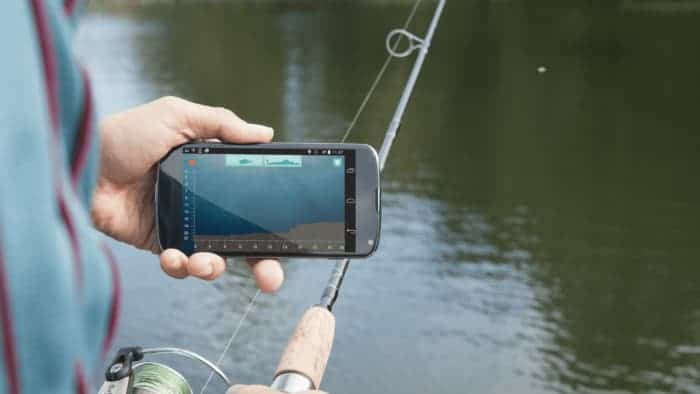
Mountable Units
These are the least common units. Their display looks like any other portable fish finder. But the twist is that they can easily be semi-permanently mounted on a boat or kayak. They come with a c-clamp you can tighten or loosen to adjust the grip. This makes them perfect for kayak fishing, boat trips, and canoe fishing.
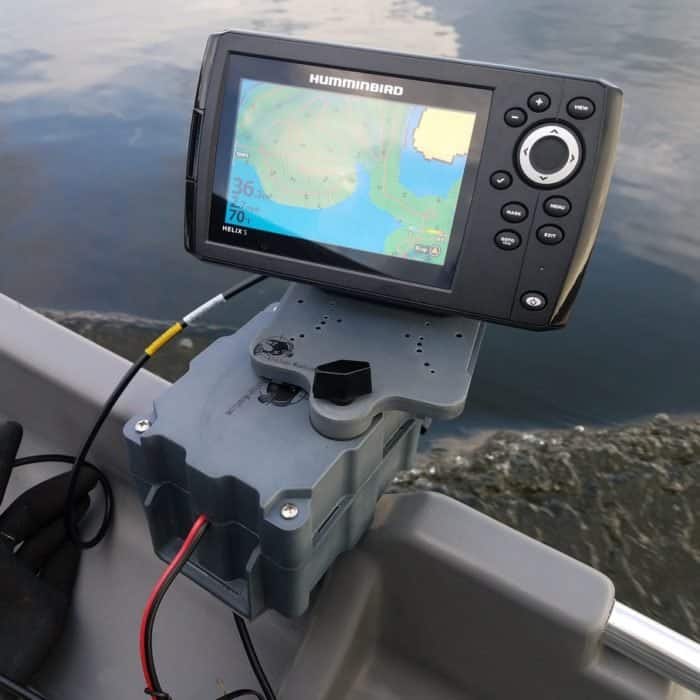
Important Fish Finding Add-Ons
Not all fish finding devices are equal. Some are cheap because they only use sonar technology and others are more expensive because they have fancy add-ons built-in. These upgrades can take your fishing experience to the next level.
GPS Fish Finders
As we’ve mentioned, some fish finders come with a built-in GPS system. It still finds schools of fish, but on top of that, it shows you your position on a map at any given time.
You can do some cool things with these units. For instance, you can find a fishing spot you really like and save its position using GPS. Then, when you go fishing next time, you can tell the GPS to guide you to your very own fishing hotspot. Or, if you’re on a lake, you can devise a route and save it on the device leading you from the dock to some new spots you haven’t explored yet, and back.
Standalone Fish Scanners
These are the stripped-bare scanners. Their only job is to find schools of fish and to show you how deep the water is. This isn’t to say they’re not good units—they are! They’re perfect for a more traditional and off-the-grid approach to fishing. Those who have a hard time getting along nicely with technology will surely appreciate these minimalistic (but accurate!) devices.
Connectivity Fish Finders
Meet the crème de la crème: the connectivity portable fish finders. These units typically have a GPS system built into them but offer even more features. Their main point is to make fishing a more dynamic experience.
You can connect these scanners to your phone. Create a depth map of the lake, place digital pins on your favorite fishing locations on a map, and then download all that information onto your phone. It’s that easy. As if that weren’t enough, you can also upload all this information online. For instance, you can share with your fishing buddies the details of your latest fishing excursion through email or on Facebook.
What Should I Look For in a Portable Fish Finder?: Ultimate Buying Guide
Finding a fish scanner that is suited to your needs is crucial. They’re not cheap devices, so it’s important to find one you love at the first purchase.
With so many units available online, it can be easy to lose yourself. That’s why we came up with this portable fish finder buying guide: to lead you in your search. When you start browsing online or at a store, look for these features. The best fish finder will check most of these boxes.
Quality of the Transducer
A high-quality transducer is key to good readings. It’s what emits the sound waves (sonar) and tells you if there are any fish nearby. A crappy transducer is worthless. Companies don’t always advertise how good (or how bad) these pieces are. Look through customer reviews for mentions of “accurate readings.” If you found a lot, hurrah! You can move to the next point.
Power Rating
All fish scanners have a power rating measured in watts. Some models have a lower rating and others have a higher rating. While they both work, the best units have a high wattage. They’re able to get accurate readings for higher depths. So, if you planning to go depth fishing, we recommend getting the most powerful unit you can afford.
Batteries
There are three ways of powering your unit. Either using a rechargeable battery, disposable batteries, or plugging it into a 12-volt power source. Look into the specs of the scanner you’re interested in to find out how it’s powered.
Be careful of which one you choose. While 12-volt scanners are typically the cheapest, they have to always be plugged into your boat. This makes them a lot less portable, doesn’t it? We recommend getting the disposable batteries (which you can recharge with a separate gadget) one. It’s what works best in the long run.
Portability and Ease of Transportation
How good is a portable fish finder if it’s too clunky to take with you when you go fishing? You need to find a unit with a compact design that will be easy to pack and carry with you. If hauling it around seems like too much of a hassle, maybe that’s not the model for you.
Display Quality
You need to analyze the readings clearly for the best fishing experience. Thus, investing in a quality display is a good idea. Will color graphs help you understand better where fish are? Do you have trouble seeing and need a bigger screen? It’s entirely up to you!
Also, keep in mind that it will be sunny for many (or at least some) of your fishing trips. Because of that, you’ll need a screen that doesn’t get dark when it’s bright out. Similarly, if you plan to fish at night, you need a screen that has a backlight. Otherwise, you won’t be able to use your precious device.
Screen Size
Most screens we’ve seen measure at least 3.5 inches diagonally. Some models have larger screens and others have even smaller displays. Which one you get depends on how well you see things. What size screen will you feel comfortable with?
Connectivity
If 21st-century technology is your thing, getting a scanner that can be paired with your phone is probably a good investment. You’ll be able to share details of your fishing trip with friends and also analyze maps later from the comforts of your own home.
Connectivity is not at all a crucial feature. Keep in mind that it makes these devices more expensive. Yet, a fish finder that can’t connect to other devices gets its job done just as well as a fancier one.
Cone Angle
Transducers emit cone-shaped sound waves to give you an idea of what’s lurking beneath the surface. We’ve mentioned that getting a good transducer is key. But that’s not the full story.
To get a wide underwater picture, you need wide cone-shaped waves, namely 60 degrees wide. Narrower angles (such as 20 degrees) work best for deep fishing. Dual beal finders are the only ones that let you choose whether you want a wider or narrower view of what’s under you. That’s why they’re more expensive. Other scanners usually only use a 20-degree angle when it comes to their waves.
We recommend getting a dual-beam fishfinder, so you can play with the wave-degree settings. It’s more adaptable to whatever kind of fishing you want.
Frequency
Some units will let you adjust the frequency of the sound waves the transducer emits. That’s pretty helpful when you want to do both deep sea and shallow water fishing. It lets you get a clearer, sharper picture of what’s beneath the surface. Higher frequencies work in shallower areas—190 kHz and 200 kHz. In deeper areas, a low frequency (50 kHz, for instance) works best.
Waterproof
Funnily enough, not all fish finders are waterproof. Transducers always are, but the LED screens can get damaged with splashes of water. You’re better off spending a little more money getting a waterproof unit. It’s the best way of maximizing your investment.
Cost
Finally, draw up a budget for your portable fish finder and stick to it. You’ll find units for anywhere between $50 and $350. On the cheaper end of things, you’ll see minimalistic units with no GPS and no connectivity. On the pricier end of the scale, the units will have a lot of fancier settings. Yet, at the end of the day, they all find fish.
Final Words: What Is the Best Portable Fish Finder?
Best portable fish finder for ice fishing: FishHunter Wireless Scanner
Best portable fish finder for kayak rentals: Humminbird Fishing Buddy MAX
Best portable fish finder for canoe: Deeper Smart Wireless Finder
Best portable fish finder for shore fishing: Garmin Striker 4 Fish Finder







